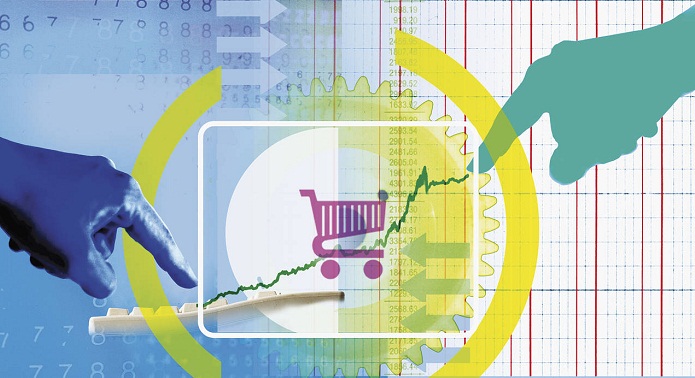This reminds me of the joke about an economist who calculates that as electricity consumption accounts for 3% of GDP, a blackout of half of the nation’s grid should subtract a mere 1.5% from growth. The flaw is that vast amounts of economic activity depend on electricity.
Similarly, to get a handle on how the economy may respond to a nose dive in the energy business, we must consider the interconnectedness of sales and output across companies and industries. Increased outlays in one corner of the economy routinely boost spending in another. Higher demand in one industry spurs investment in new productive capacity that generates orders and employment in others. Moreover, some spending categories, like nonresidential construction, are highly volatile, either growing briskly or contracting. Others, like household rents or mortgage payments, are relatively stable across the business cycle.
What does this mean? The average household spends about 70% of its budget on food, housing and related utilities, transportation to and from work, and health insurance. When a family grows concerned about its future income or job prospects, it doesn’t stop paying rent or cancel its mobile phone service. Instead, it typically defers discretionary spending—on durable goods (cars and appliances), luxury items and vacations. Those categories amount to less than 25% of total household spending, but they explain virtually all of its variation through time.
At Carlyle, we have found that data such as leisure car rentals or hotel bookings can predict three-quarters of the variation in consumption over the next six months. In 2007 the decline in leisure car rentals provided an important signal about the impending pullback in household spending.
Nothing would have been more mistaken than to suggest this signal be ignored because car rentals account for a trivial share of GDP. Similarly, business equipment purchases accounted for only 6% of GDP in 2008, but they accounted for nearly 50% of the 2009 contraction in GDP.
To assess the impact of the sharp decline in oil prices, it is best to focus on the response of volatile, cyclically sensitive data such as industrial production, core capital-goods spending, discretionary consumption, and nonresidential construction. A look at the first two of these is worrying. The global energy bust—along with similar price declines in industrial metals and minerals—has cut deeply into manufacturers’ orders for capital equipment and intermediate goods, including engines, transmissions, tubes, precision tools and machined parts.
The data in the latter two areas are more reassuring. Sales of domestic autos, particularly gas-guzzling SUVs and light trucks, continue to exceed expectations. And after the biggest collapse in over 50 years, spending on nonresidential construction continues to grow at double-digit rates thanks, in part, to declines in construction materials prices.
However these numbers evolve, ignore the soothsayers who say one reason to be sanguine is that the low-volatility service sector makes up 77% of GDP. Rather, analysts seeking to understand the oil-price shock should focus on the behavior of data that rise and fall predictably in good times and bad, no matter how large or small their share of the broader economy.
More about:
















































